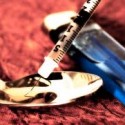Binge drinking concerns rise as students celebrate St. Patrick’s Day
The celebration is not yet over for St. Patrick’s Day. With more festivities to come over the upcoming weekend, concerns about binge drinking inevitably pop up.
According to the Office of Juvenile Justice and Delinquency Programs, a program ran by the U.S. Department of Justice, approximately 90 percent of the alcohol consumed by people under the age of 21 is in the form of binge drinks. The Centers for Disease Control also reports that people between 18 and 20 years old make up the highest proportion of binge drinkers, at 51 percent.
Though the CDC defines binge drinkers as people who take in excess amounts of alcohol, they note that binge drinkers are not necessarily alcoholics. But the effects of binge drinking, which range from alcohol poisoning to unwanted sexually transmitted infections and liver disease, are still a cause for concern.
Even though Baruch is not notorious for drinking since it is a commuter school, many students here still attest to seeing it. Adam Koniarski, a freshman, said it’s something he sees whenever he goes to a party.
“I used to see a lot of binge drinking happening when I served in the Navy,” said Ivan Serdyuk, a junior and computer information systems major. “But when people decide to drink, they know that there’s a cost and benefit.”
Part of binge drinking is the conscious decision to become intoxicated. For men, it’s consuming five or more drinks, while for women it’s four or more, both within a two-hour period. A recent CDC report showed that men between 18 and 44 years old were more likely to indulge in alcohol than women.
Though many ad campaigns and colleges aim to reduce drinking in general, a recent study done by Northwestern University Kellogg School of Management shows that binge drinking public service announcements in Canada that used repulsive pictures aimed at making students feel guilt or shame for their actions actually ended up meeting resistance.
The reason, as one professor of the study noted, is something called “defensive processing” where people already feeling guilt or shame (about drinking or another problem) disconnect themselves with the image shown to decrease those feelings.
Regardless of reason, some feel that an advertisement or announcement wouldn’t change anything.
“A picture might help out but if a person is going out to have fun I don’t think they’re going to consider a picture,” said Serdyuk.
Koniarski thinks it might help. “It might cause them to turn it down but not stop it … it’ll impact some people.”
As the festivities party on, some students advise others to watch how they celebrate.
“Take it in moderation and have a designated [driver] with you,” said Shanta Jagdeo, a junior and accounting major. Koniarski advises that other students should “know your limits. Don’t go overboard.”
source: http://www.theticker.org
